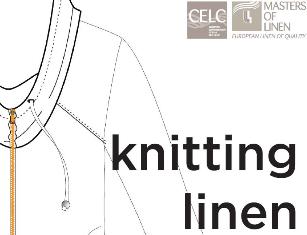. It is and authentic and rustic, finished and pre-washed or, conversely, definitely sophisticated by the use of chic dyes and complex stitches, linen knits have been developed using innovative yarns.

Today, by varying the knitting process, linen knits can take on multiple forms, circular for tops and t-shirts or flat for fully fashion knits can have smooth surfaces that capture the light, highlight textures and play with contrasts.
Thanks to the multiplicity of enhancements that can alter the hand and surprise the eye, linen knits are creating a new fashion signature. They provide captivating scenarios or unexpected opportunities, ideal for all fantasies and uses, which will appeal to today's demanding customer. Style exercise : the zipped sweatshirt It is worked in 30 versions which explore all woven and flat or circular knit techniques. Linen innovates with knit applications that are fully-fashioned or cut-and-sew. It is ideal for a wide variety of looks, enriched by creative yarns and blends.
From very fine gauges to 5-gauge handknits, knitting is facilitated by the excellence of the yarns developped by the weavers of the Club Masters of Linen. As a creative support for technical and novelty stitches, linen offers new results which can be urban, sporty, casual or sophisticated. This season's stars include : Fleece, piqué, double-face, pure linens and stretch blends, luxurious cashmere, alpaca … and metallic or waterproof coatings. In deliberately neutral colors and a broad range from whites to natural linens with metallic touches - gold, silver … A big thank you to our partners – all the trimmings, cords & ribbed edgings are in 100% linen.
Because the needles are set in rows, the fabric is produced flat with a back-and-forth movement across the needle bed. It is particularly useful for "sized garment blanks":
- In fully-fashioned knitting, the garment shape and size is controlled by increasing or decreasing needle utilization. Garment blanks are then assembled as sweaters.
- In 3-D for a fully-finished garment. Flat knitting machines produce fabrics from 3 to 18-gauge.
Here needles are set in a circular bed to produce tubular fabric, mainly sold by the meter for cut-and-sew manufacturing. The fabric can be worked in tubular form or slit open to form a single layer like woven fabrics. Circular knitting machines produce fabrics from 7 to 60-gauge.





